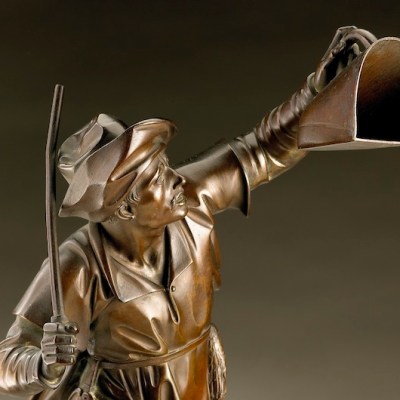Turner is riding high this autumn. ‘Late Turner’ recently opened to widespread acclaim at Tate Britain; at the end of October, Mike Leigh’s new film, Mr. Turner, goes on general release across the UK. And perhaps not coincidentally – given how extensively the artist is already being marketed at the moment – Sotheby’s has announced that its Old Master and British Paintings Evening Sale in December will include Rome, from Mount Aventine (1836), one of only a handful of major works by Turner currently in private hands.
This magnificent painting is part of the Rosebery family collection, but has been on loan to the National Galleries of Scotland since 1978. The owners now need to sell it to fund the maintenance of their estates, and while few people are likely to begrudge that decision, it is unfortunate that the work seems destined to disappear from the public eye at a time when Turner is so determinedly fixed in it. The painting is one of the greatest expressions of the English late-Romantic dream of Italy. It is at once lyrical and epic, the sentimental episode of its foreground falling away to a hazy and seemingly timeless panorama of Rome – as if an episode from The Old Curiosity Shop had been grafted on to Shelley’s unfinished Roman dream-vision poem, The Triumph of Life. On viewing his rival’s Royal Academy paintings in 1836, the Aventine view among them, Constable wrote that ‘Turner has outdone himself, he seems to paint with tinted steam, so evanescent and airy.’
Of course, it’s rather early to speculate about any hypothetical campaign to secure this painting for a national collection. But should a foreign buyer triumph in the saleroom, the DCMS would, I imagine, be minded to place this masterpiece under temporary export deferral on the grounds that it fulfils at least two, if not all three of the Waverley criteria used to determine whether objects are of national cultural importance. Much may depend on the fall-out from the Scottish independence referendum, which takes place after the time of writing: whatever the result, the fiscal recalibration that looks like it will inevitably ensue will no doubt have ramifications for the Scottish museum sector, and for its ability to fundraise for acquisitions.
While few would query the importance of this painting, it is absorbing to see how Turner continues to raise the hackles of art historians – not so much because any doubt his achievement, but because of perennial disputes about where, if at all, the artist sits in the genealogy of modernity and modern art. In this context, Emma Crichton-Miller’s essay on ‘late style’ offers an interesting reminder of how our sense of artistic innovation is tied to cultural narratives beyond the merely aesthetic – to our historically conditioned notions of careers and lifespans, that is, and how we associate them with individual accomplishment.
Apollo Podcast Film Special: Mike Leigh on Mr. Turner
Timothy Spall gives a remarkable turn as the artist in Mr. Turner: grunting and puffing; gurning and cursing; and painting with an almost primal aggression. However, as Lynda Nead argues in a feature on artist biopics, such films have a tendency to exalt in the lives of artists to the extent that their art is further mythologised. The gap between public performance and creative process seems to widen, however finely the film director attends to material detail. For me, films about artists
are at their best when they aspire not to the accuracy of a documentary but – as in the work of Peter Greenaway – when they cut across our myths about creativity and image-making.
But personality, as they say, goes a long way. I’d hazard it will be easier (though not easy!) to raise money to secure a Turner painting for the nation, should it come to it, than to fundraise to protect a major collection of decorative arts. The Wedgwood Collection does not have any individual creative genius linked to it – notwithstanding the historical importance of the great Josiah Wedgwood himself – but its archive contains more than 80,000 items, offering an unparalleled record of British design and manufacture. An Art Fund appeal has until 30 November to raise a further £2.74 million that will prevent its dispersal. I urge any reader in search of a cultural cause this month to donate: www.savewedgwood.org.
Related Articles
Review: Late Turner at Tate Britain (Martin Oldham)
First Look: ‘The EY Exhibition: Late Turner – Painting Set Free’ at Tate Britain (David Blayney Brown)
Poetic Painters: Turner and Helen Frankenthaler at Turner Contemporary (Corinna Lotz)
First Look: Turner and the Sea (Christine Riding)

